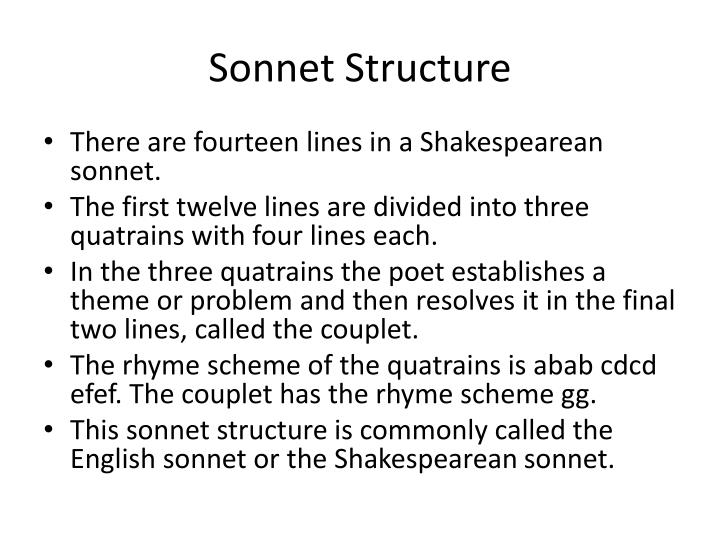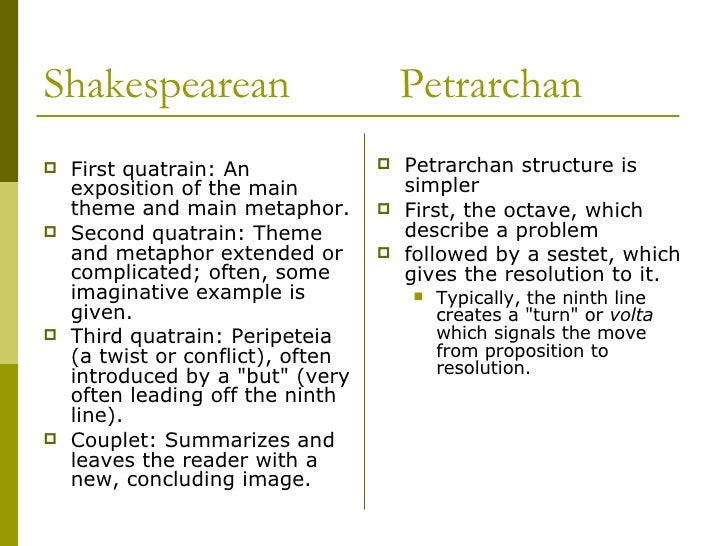

But, the speaker is very well aware that this can’t last forever. As time has progressed, the Youth only seems to have grown younger and more beautiful. This young man, the speaker says, has power over time and its means of changing men and women. Here though, he calls him “my lovely boy,” making sure that everyone who reads these lines is quite clear on who he’s speaking to. Recently, the speaker’s intended listener has been less clear than in early sonnets. In the first lines of ‘Sonnet 126,’ the speaker begins by addressing the Fair Youth quite clearly. Thy lovers withering, as they sweet self grow’st – For example, the transition between lines one and two as well as seven and eight.ĭost hold time’s fickly glass, his sickle hour,

These include but are not limited to examples of: Shakespeare makes use of several poetic techniques in ‘Sonnet 126’. The poem can also be divided into three sets of four lines and a final two-line couplet. The fifth line is a particularly good example of the pattern. The first is unstressed, and the second is stressed. In iambic pentameter, each line contains five sets of two beats, known as metrical feet. The poem is composed in iambic pentameter, though. They rhyme AABBCCDDEEFF, rather than ABABCDCDEFEFGG as the vast majority of Shakespeare’s sonnets do. The twelve lines are divided into six couplets instead. It is one of two sonnets in the entire sequence of poems that does not conform to the standard rhyme scheme. ‘Sonnet 126’ by William Shakespeare is an untraditional sonnet that’s made up of twelve lines. Time will take him as it does everyone in the future. Whether the Youth lives forever in the speaker’s sonnets or not, he’s going to die physically. But, old age is not something one can resist forever. He must be, the speaker thinks, a favorite in nature’s eyes. Now, he returns once more to speak on the Youth’s beauty and how special it seems compared to everyone else. He has made his love for the Youth incredibly clear throughout the previous 125 sonnets. Throughout ‘Sonnet 126,’ the poet explores themes of old age, time, and the future. Decay is going to touch him as it does everyone else. But, as this poem draws to a close, the speaker admits that eventually, nature is going to have to offer the Youth up to death and old age. His remarkable youth is something that the speaker has spent a great deal of time exploring and something that other suitors are also interested in. This allows him to move through the stages of life, retaining his beauty in an unusual way.

Throughout the lines of ‘Sonnet 126,’ the speaker describes the Youth’s favoritism in nature’s eyes. It concedes to the inevitability of death. ’Sonnet 126’ by William Shakespeare is the last Fair Youth sonnet. Her audit, though delayed, answered must be,

She may detain but not still keep her treasure. Yet fear her, O thou minion of her pleasure May time disgrace, and wretched minute kill. She keeps thee to this purpose, that her skill In nature, sovereign mistress over wrack,Īs thou goest onwards still will pluck thee back, Thy lovers withering, as thy sweet self grow’st. Who hast by waning grown, and therein show’st Sonnet 126ĭost hold time’s fickle glass his sickle hour, This poem is often referred to as the “envoi” or “envoy” of the Fair Youth sonnets. The sonnets define their connection in terms that no other love could ever surpass. He was attracted to the man physically as well as emotionally and spiritually.
#Shakespeare sonnet structure series#
It is the very last poem in the series of Fair Youth sonnets that began with ‘ Sonnet 1.’ These are dedicated to an unknown young man, someone who the speaker found remarkable. ‘ Sonnet 126′ is one of William Shakespeare’s 154 sonnets.


 0 kommentar(er)
0 kommentar(er)
